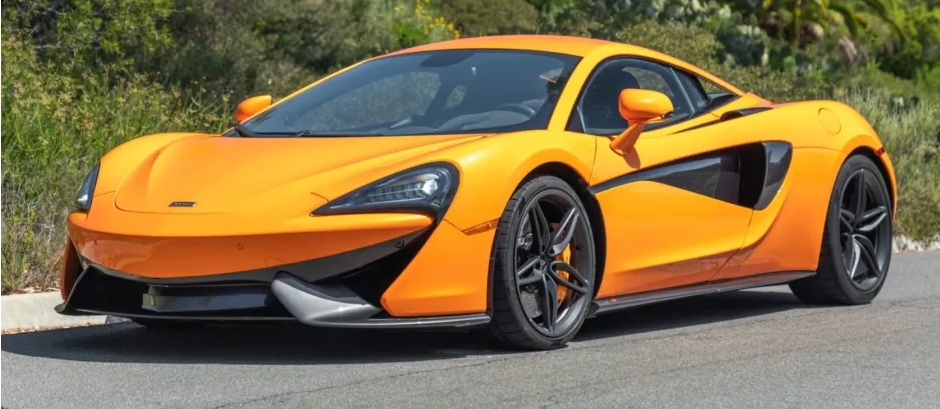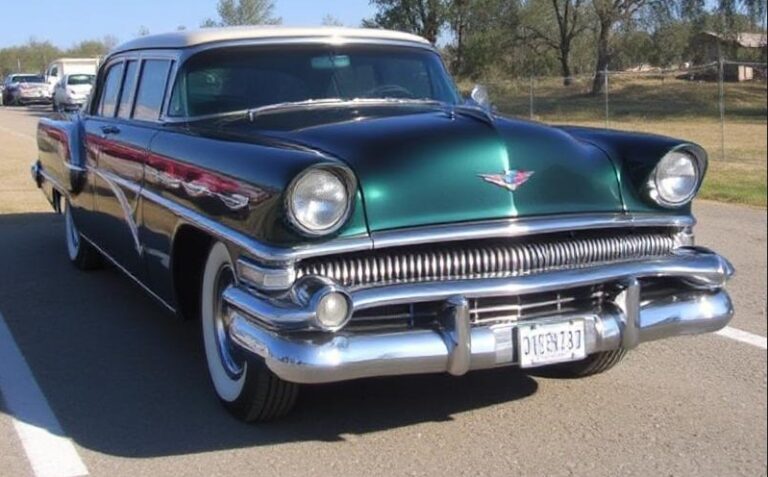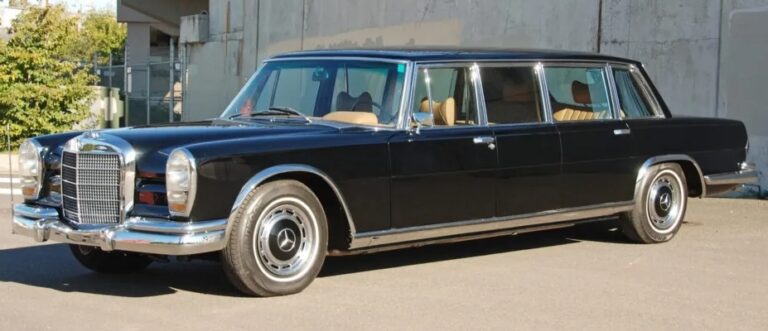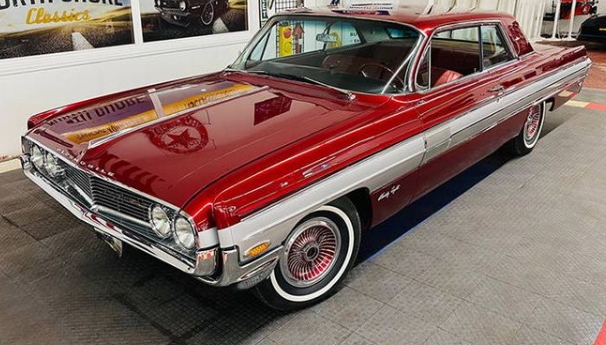The Sports Series Revolution: Charting the Evolution of the McLaren 570S
In the world of high-performance automobiles, few names evoke the same reverence for engineering purity and racing pedigree as McLaren. By the mid-2010s, the Woking-based manufacturer had firmly re-established itself as a titan of the road car world with the boundary-pushing P1 hypercar and the ferociously capable 650S supercar. Yet, McLaren Automotive was at a pivotal crossroads. To ensure long-term viability and growth, it needed to broaden its appeal and compete in a more accessible, yet fiercely contested, market segment. The answer was the Sports Series, and its heart, soul, and standard-bearer was the McLaren 570S. This is the story of its evolution from a disruptive newcomer to a diverse and celebrated family of world-class driver’s cars.
The Foundation: The 570S Coupe (2015-2021)
Unveiled at the 2015 New York International Auto Show, the 570S Coupe was a watershed moment for McLaren. It was designed to challenge the established hierarchy, targeting stalwarts like the Porsche 911 Turbo S and the Audi R8 V10 Plus. While dubbed McLaren’s “entry-level” model, the term was purely relative; the 570S was dripping with the company’s signature DNA.
At its core was the MonoCell II, a revised version of the carbon fiber monocoque chassis found in its more expensive siblings. This wasn’t just a marketing gimmick; it was a fundamental advantage. Weighing a mere 75kg, the carbon tub provided immense structural rigidity and a lightweight foundation that its aluminum-based rivals couldn’t match. The sills were lowered and narrowed compared to the 650S, making ingress and egress—past the iconic dihedral doors—a slightly more civilized affair, a nod to its intended daily usability.
Power came from the M838TE, a 3.8-litre twin-turbocharged V8 engine, a familiar architecture but revised for the Sports Series. The ‘TE’ stood for ‘Twin-turbo Evolution,’ with around 30% of its components being new. As the name suggests, it produced 570 PS (Pferdestärke), which translates to a potent 562 brake horsepower, along with 443 lb-ft of torque. Mated to a lightning-fast seven-speed dual-clutch transmission, the 570S could rocket from 0-62 mph (100 km/h) in a blistering 3.2 seconds and on to a top speed of 204 mph.
Crucially, to differentiate it from the Super Series (the 650S family) and manage costs, McLaren opted for a more conventional suspension setup. It eschewed the complex, hydraulically cross-linked Proactive Chassis Control in favour of a high-quality system of adaptive dampers and traditional anti-roll bars. The result was a car that felt more analogue, more connected, and, to some, even more engaging at sane speeds, offering sublime feedback through its electro-hydraulic steering rack—a feature purists cherished in an era of increasingly numb electric systems.
The True Entry Point: The 540C (2015-2021)
Launched shortly after the 570S, the 540C was McLaren’s most accessible model. The ‘C’ denoted ‘Club,’ and it was strategically aimed at markets with specific tax brackets and a slightly less performance-obsessed clientele. Visually, it was nearly identical to the 570S, with subtle aerodynamic tweaks to the front bumper and rear diffuser.
The primary difference was a detuned version of the same 3.8-liter V8, now producing 540 PS (533 bhp). Performance was only marginally blunted, with a 0-62 mph time of 3.5 seconds. To further reduce the price, the 540C came standard with high-performance steel brakes instead of the carbon-ceramic discs standard on the 570S, though the latter remained an option. It was a clever move, allowing the McLaren brand to reach a wider audience without diluting the core experience of a lightweight, carbon-tubbed, mid-engined supercar.
The Continental Cruiser: The 570GT (2016-2021)
If the 570S was the scalpel, the 570GT, introduced in 2016, was the exquisitely crafted travelling case. McLaren identified a desire for a Sports Series model with a greater emphasis on comfort, refinement, and long-distance usability. The 570GT was their brilliant response.
The most striking feature was its unique glass hatch. The standard engine cover was replaced by a side-opening, glass-panelled “Touring Deck,” a leather-lined storage area providing an additional 220 litres of luggage space. This, combined with the front trunk, gave the 570GT a level of practicality previously unseen in a McLaren.
But the changes were more than skin deep. McLaren’s engineers softened the spring rates (15% at the front, 10% at the rear), recalibrated the steering for a slightly more relaxed feel, and fitted a quieter exhaust system. A panoramic glass roof became standard, flooding the cabin with light and creating a more airy, spacious atmosphere. Pirelli P Zero tyres replaced the more aggressive P Zero Corsa tyres of the 570S, further enhancing ride comfort and reducing road noise. It retained the same 562 bhp engine, ensuring it was still devastatingly fast when called upon, but its character was transformed into a sophisticated grand tourer capable of crossing continents in supreme comfort.
Open-Air Thrills: The 570S Spider (2017-2021)
A convertible variant was an inevitability, and in 2017, the 570S Spider arrived. Thanks to the inherent strength of the MonoCell II chassis, the conversion from coupe to convertible required no additional structural bracing. This was a monumental engineering feat. The result was a Spider that suffered no loss in rigidity and incurred a minimal weight penalty of just 46kg over the Coupe, primarily due to the two-piece retractable hardtop mechanism.
The roof could be operated in just 15 seconds at speeds up to 25 mph, transforming the car from a snug coupe to a dramatic open-top machine. With the roof down, the driving experience was amplified, the V8’s symphony of induction noise and turbo whistle filling the cabin. Performance remained virtually identical to the Coupe, making the 570S Spider one of the most dynamically accomplished and compromise-free convertibles in its class. It became an instant best-seller, combining the raw performance of the 570S with the irresistible allure of open-air motoring.
The Apex Predator: The 600LT Coupe & Spider (2018-2020)
Just when the Sports Series seemed complete, McLaren unleashed its masterpiece. The “Longtail” (LT) designation is sacred at McLaren, reserved only for its most extreme, track-focused, and driver-centric cars. The 600LT, first as a Coupe in 2018 and then a Spider in 2019, was the ultimate evolution of the Sports Series platform.
The LT recipe was followed to the letter: more power, less weight, and optimized aerodynamics. Power from the 3.8-liter V8 was increased to 600 PS (592 bhp). Weight was slashed by a claimed 100kg from the 570S through extensive use of carbon fiber for the body panels, Alcantara in the stripped-out interior, and optional super-lightweight carbon fiber racing seats borrowed from the McLaren Senna.
The most dramatic visual and aural feature was the top-exit exhaust system. Shortened pipes terminated directly atop the engine deck, spitting flames and creating an intoxicatingly raw soundtrack. The “Longtail” name was made literal by extended front and rear carbon fibre splitters and a large fixed rear wing, which together generated 100kg of real downforce at 155 mph. The suspension was lowered and stiffened, the steering quickened, and the brakes upgraded with components from the 720S. The 600LT wasn’t merely a faster 570S; it was a re-engineered, visceral, and utterly intoxicating machine that delivered one of the most unfiltered driving experiences of the modern era. The Spider variant offered the same ferocious performance, with the added sensory overload of its top-exit exhausts roaring just inches behind the occupants’ heads.
The Race Car for the Road: The 620R (2020-2021)
As a final, thunderous crescendo for the Sports Series, McLaren unveiled the 620R. This was not a track-inspired car; it was a literal, road-legal version of the successful 570S GT4 race car. It was the most powerful, focused, and rarest of the family, with production limited to just 225 units.
The 620R shared the GT4’s adjustable aerodynamic elements, including a massive carbon fibre rear wing with three settings, delivering up to 185kg of downforce. It featured two-way manually adjustable coilover suspension from the race car, allowing owners to fine-tune the setup for specific tracks. The interior was spartan, with carbon racing seats, six-point harnesses, and door-pull straps. Air conditioning and a stereo were no-cost options, highlighting its track-first philosophy.
Power was raised to a final peak of 620 PS (612 bhp), making it the most powerful Sports Series model. It came standard with Pirelli P Zero Trofeo R semi-slick tires and offered a full-slick tire option for track use only. The 620R was the ultimate, uncompromising expression of the platform’s potential—a raw, demanding, and incredibly rewarding machine for the most dedicated of drivers.
.

.
Legacy and Conclusion
From 2015 to its production end in 2021, the McLaren Sports Series, spearheaded by the 570S, was a resounding success. It more than doubled McLaren’s annual sales volume and introduced thousands of new customers to the brand. Beyond the numbers, it proved that McLaren could infuse its core principles of lightweight engineering and driver engagement into a more accessible package without dilution.
Throughout its lifecycle, the platform demonstrated remarkable versatility. It evolved from the sharp and capable 570S Coupe into the refined 570GT, the glamorous 570S Spider, and ultimately, into the fire-breathing, track-destroying 600LT and 620R. It offered trim levels like ‘Luxury’ and ‘Sport’ but truly thrived on customization through McLaren Special Operations (MSO), allowing owners to create truly bespoke vehicles. The evolution of the 570S is a testament to McLaren’s ambition and engineering prowess. It wasn’t just a car; it was a family, a strategy, and a revolution that cemented McLaren’s place not just as a builder of supercars, but as a formidable force across the entire performance spectrum.







